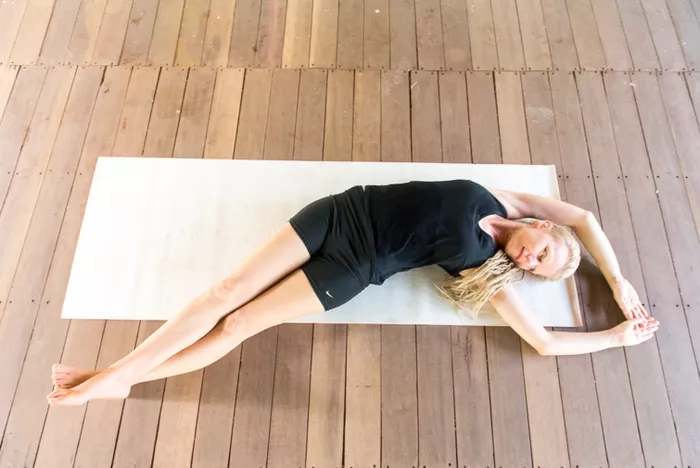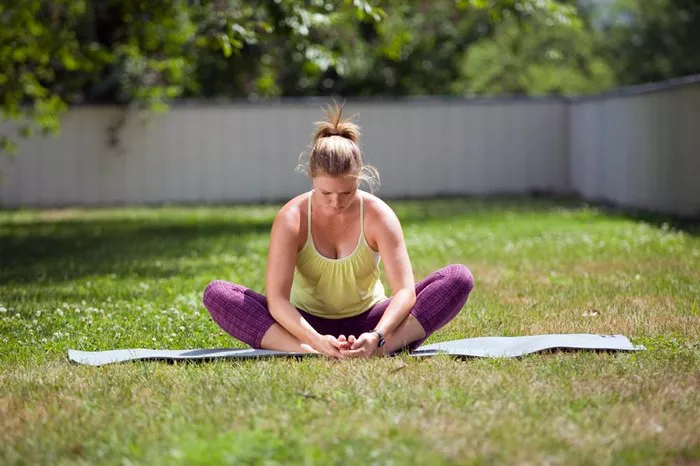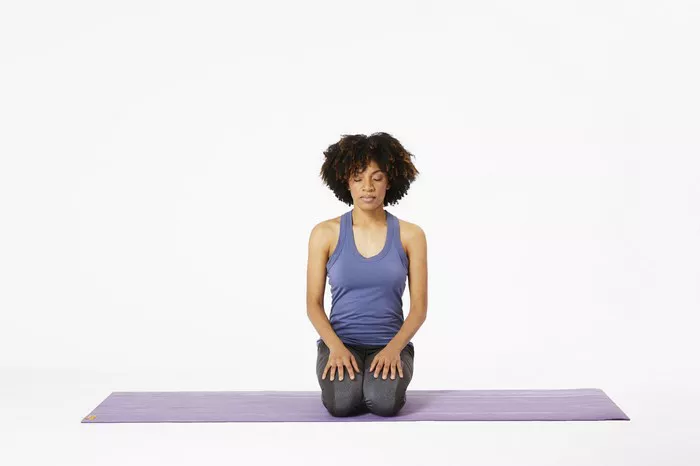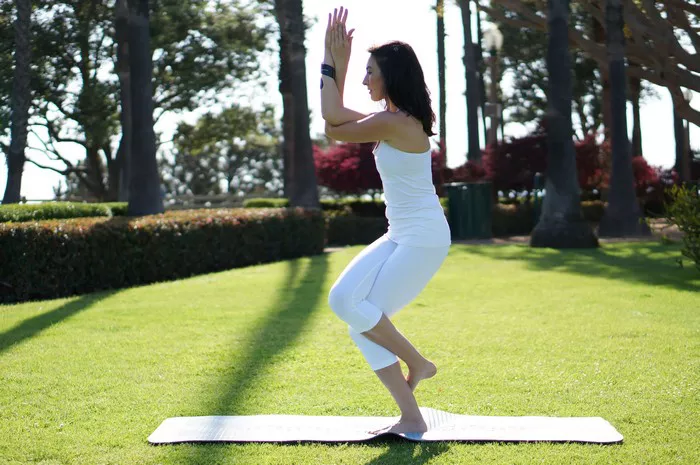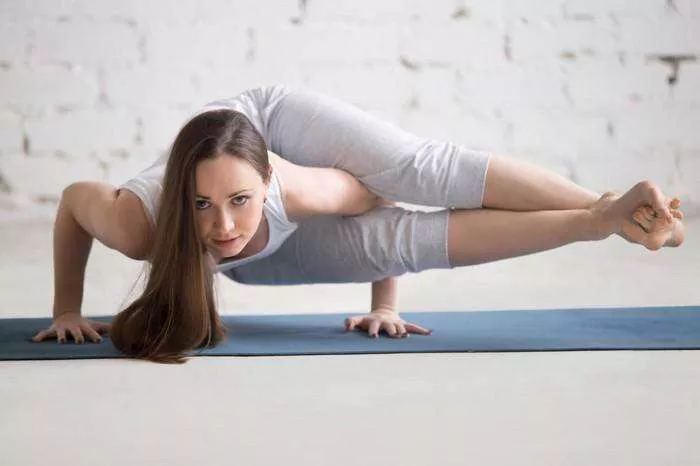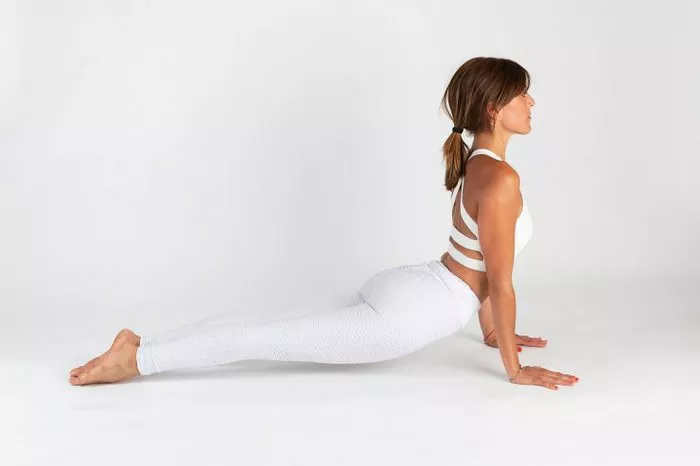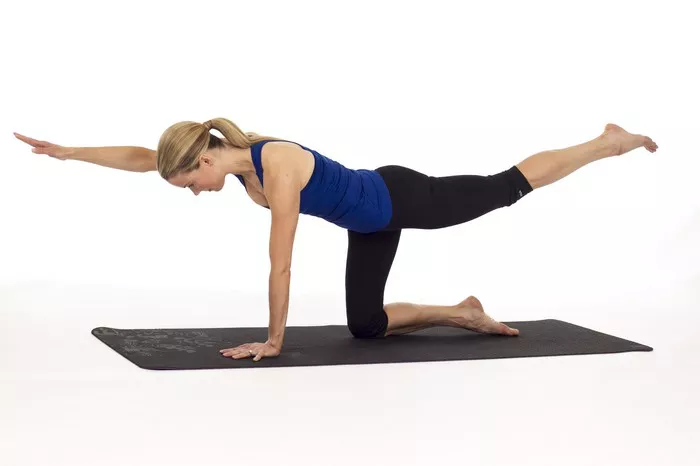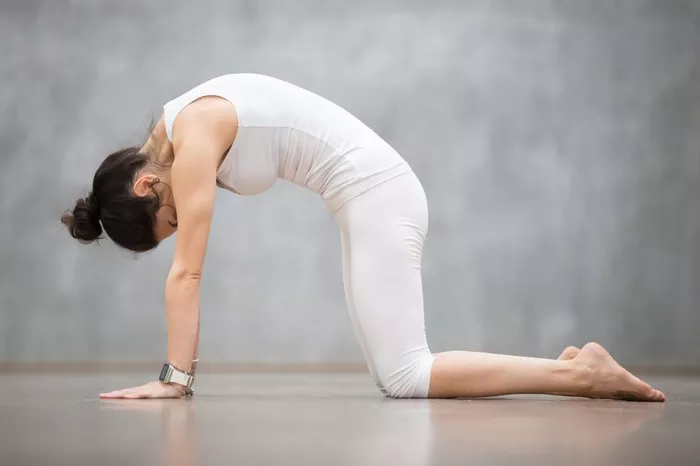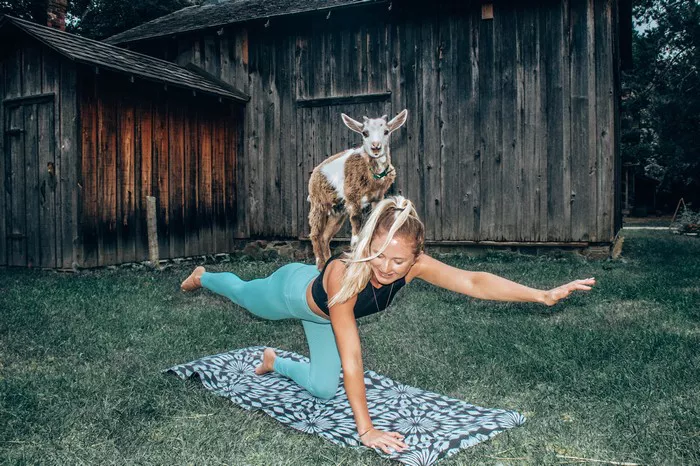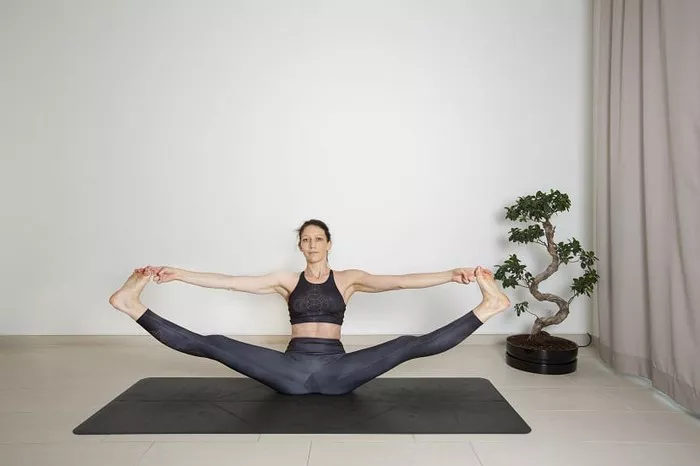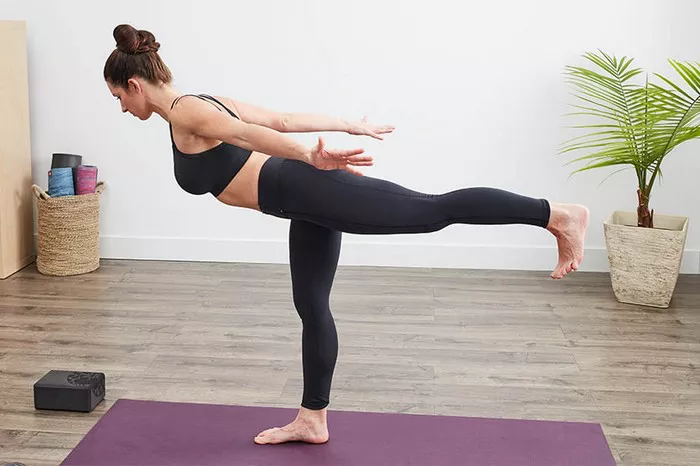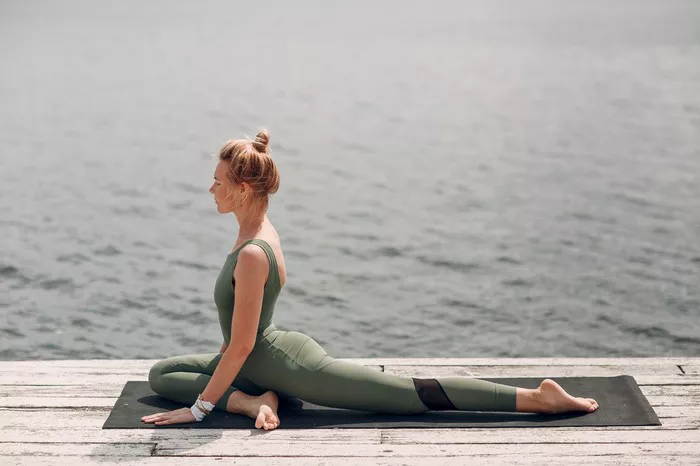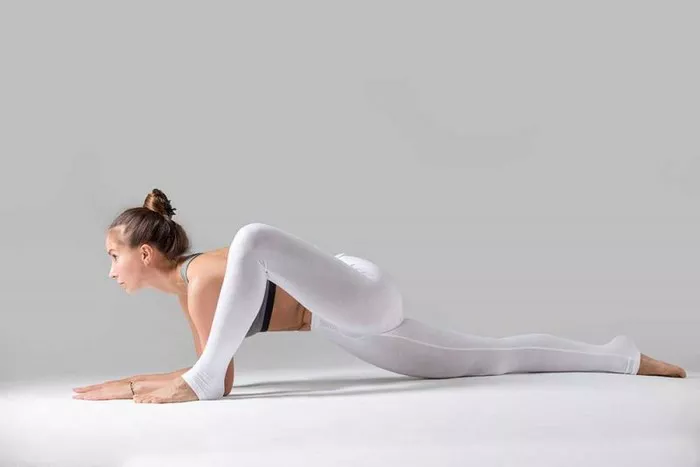Iyengar Yoga, developed by B.K.S. Iyengar, is a style of yoga that emphasizes precision, alignment, and the use of props. Unlike more vigorous yoga styles, Iyengar Yoga is methodical and detail-oriented. Each posture is held for a longer duration to deepen awareness and encourage safe alignment. Practitioners often use blocks, straps, blankets, and bolsters to modify poses according to their individual needs, which makes this style accessible to people of all fitness levels.
The structured nature of Iyengar Yoga makes it ideal for beginners and experienced yogis alike. This discipline is also known for its therapeutic benefits. It is frequently recommended by health professionals for individuals dealing with musculoskeletal issues, chronic pain, or recovering from injuries. The deliberate pace and attention to detail make it not only a physical workout but also a meditative practice.
Benefits of Practicing Iyengar Yoga Regularly
Engaging in regular Iyengar Yoga practice yields numerous physical, mental, and emotional benefits. Physically, it improves strength, flexibility, and balance. Because each pose targets specific muscle groups and alignment, consistent practice promotes postural awareness and body integrity. Moreover, the prolonged holding of poses helps in building endurance and resilience.
Mentally, Iyengar Yoga fosters concentration and mindfulness. The focus on alignment and breath encourages presence in the moment, reducing anxiety and stress. Emotionally, it cultivates patience and self-discipline. The methodical nature of the practice helps develop inner calm and clarity, contributing to emotional well-being. These comprehensive benefits explain why many practitioners incorporate it as a core part of their wellness routines.
Determining the Ideal Frequency: Key Considerations
Determining how often to practice Iyengar Yoga depends on several personal factors, including your goals, schedule, fitness level, and health conditions. There is no one-size-fits-all answer, but there are general guidelines that can help you design a routine that suits your lifestyle and aspirations.
Key factors to consider include:
- Experience Level: Beginners may start with fewer sessions per week.
- Goals: Whether you’re looking for general wellness, therapy, or mastery of poses.
- Time Availability: Realistically assess your weekly schedule.
- Physical Condition: Consider injuries, chronic pain, or fatigue.
- Access to Classes or Props: Iyengar Yoga relies on props, often available in studios.
By considering these aspects, you can establish a sustainable and effective practice schedule.
Recommended Frequency Based on Experience Level
1. Beginners (1-2 Times Per Week)
If you’re new to Iyengar Yoga, starting with one to two sessions per week is advisable. This frequency allows you to become familiar with the foundational poses and the use of props. It also gives your body time to adapt to the demands of this methodical practice without feeling overwhelmed.
During the first few weeks, the focus should be on understanding alignment, learning proper breathing techniques, and developing a consistent routine. Attending classes led by certified Iyengar instructors is particularly beneficial for beginners, as they offer hands-on adjustments and personalized feedback.
2. Intermediate (2-4 Times Per Week)
As you gain experience and build physical and mental endurance, increasing your practice to two to four times per week can accelerate progress. At this stage, you might explore more complex postures and sequences. The increased frequency supports deeper understanding and muscle memory, allowing for more advanced exploration.
Practicing more often also helps you internalize key principles of Iyengar Yoga, such as body symmetry and breath control. It’s also a suitable time to start maintaining a home practice, especially if you have acquired basic props like blocks, straps, and bolsters.
3. Advanced Practitioners (5-6 Times Per Week)
Advanced practitioners who are deeply committed to the discipline may practice five to six times a week. This level of engagement supports continuous refinement of technique and integration of more challenging asanas, including inversions and deep backbends.
At this frequency, yoga becomes a lifestyle rather than a scheduled activity. It allows for a balanced mix of active and restorative sessions, tailored to your body’s needs. However, even at an advanced level, it’s crucial to listen to your body and allow rest days to avoid burnout and overuse injuries.
Weekly Scheduling Tips for a Balanced Practice
Creating a balanced weekly schedule involves varying intensity and focus. Here is a sample week for an intermediate practitioner:
Sample Weekly Schedule:
- Monday: Standing poses and hip openers (60 mins)
- Tuesday: Restorative yoga with props (45 mins)
- Wednesday: Backbends and core strength (60 mins)
- Thursday: Rest day
- Friday: Inversions and balance poses (60 mins)
- Saturday: Forward bends and twists (60 mins)
- Sunday: Gentle or restorative session (45 mins)
This type of rotation prevents physical strain and maintains mental engagement. It also ensures that all key posture categories are practiced throughout the week.
Importance of Rest and Recovery
Rest and recovery are vital components of any yoga practice, including Iyengar Yoga. Over-practicing without adequate rest can lead to fatigue, diminished performance, and even injury. Recovery days give your muscles time to repair and your nervous system a chance to recalibrate.
In Iyengar Yoga, rest does not necessarily mean complete inactivity. Gentle restorative poses such as Supta Baddha Konasana (Reclining Bound Angle Pose) and Viparita Karani (Legs-Up-the-Wall Pose) are excellent for active recovery. These poses provide therapeutic benefits while allowing the body and mind to relax deeply.
Integrating Iyengar Yoga with Other Activities
If you engage in other physical activities such as running, cycling, or weightlifting, Iyengar Yoga can serve as a perfect complement. Its emphasis on alignment and flexibility helps prevent injuries and improve performance in other disciplines.
For instance, athletes often experience tightness in specific muscle groups. Iyengar Yoga’s targeted stretching and strengthening can address these imbalances. When integrating yoga with other workouts, ensure that you schedule your sessions to avoid overexertion. A yoga session on rest days from other activities can be especially restorative.
Adapting Your Practice for Special Conditions
Iyengar Yoga is highly adaptable and is often recommended for individuals with specific health conditions, including:
- Back pain
- Arthritis
- Menstrual discomfort
- Prenatal and postnatal recovery
- Stress and anxiety disorders
In these cases, practicing two to three times per week under the guidance of a certified teacher is ideal. Custom sequences and prop usage make it possible to practice safely and effectively, even with physical limitations. Always consult a healthcare provider before starting any new physical regimen if you have medical concerns.
Home Practice vs. Studio Practice
Practicing at home offers convenience and flexibility, while studio sessions provide structure and professional guidance. For most people, a hybrid approach works best. Attending one or two studio classes weekly ensures accurate alignment and deeper learning. Supplementing with home practice helps solidify your skills and build discipline.
To set up a productive home practice space, you will need:
- A yoga mat
- Basic props (blocks, strap, bolster, blanket)
- A quiet, clutter-free area
Use instructional books or videos from reputable Iyengar Yoga teachers to guide your home sessions. Consistency is key, even if your home practice is shorter than studio sessions.
Measuring Progress Beyond Frequency
While frequency is important, true progress in Iyengar Yoga is measured by depth and quality of practice. This includes improvements in alignment, breath awareness, and inner focus. Over time, you may notice enhanced body awareness, better posture, and a calmer mind.
Keeping a yoga journal can be an effective way to track your progress. Note your physical sensations, emotional responses, and milestones in mastering poses. Reflecting on your journey reinforces motivation and personal growth.
Conclusion
The ideal frequency for practicing Iyengar Yoga depends on your experience, goals, and lifestyle. Beginners benefit from 1-2 sessions per week, while intermediate and advanced practitioners may engage in up to 6 sessions weekly. A balanced schedule with attention to rest, alignment, and personal needs ensures a sustainable and rewarding practice.
Iyengar Yoga’s systematic approach makes it suitable for a wide range of individuals, including those with specific health concerns. By integrating it mindfully into your routine, you can enjoy its extensive physical and mental benefits for years to come.
FAQs
Q1: Can I do Iyengar Yoga every day?
Yes, but it’s important to vary the intensity and include restorative sessions. Listening to your body is crucial to avoid overuse injuries.
Q2: Is Iyengar Yoga suitable for seniors?
Absolutely. The use of props and focus on alignment make it safe and effective for older adults, especially when guided by a certified teacher.
Q3: How long should a typical Iyengar Yoga session last?
A standard session usually lasts 60 to 90 minutes, but even shorter sessions of 30 to 45 minutes can be beneficial.
Q4: Do I need props to practice at home?
Yes, having basic props like blocks, straps, and blankets enhances your practice by providing support and improving alignment.
Q5: Can Iyengar Yoga help with stress and anxiety?
Yes. The meditative quality of holding poses and focusing on breath can significantly reduce stress and promote mental clarity.
Related Topics:

